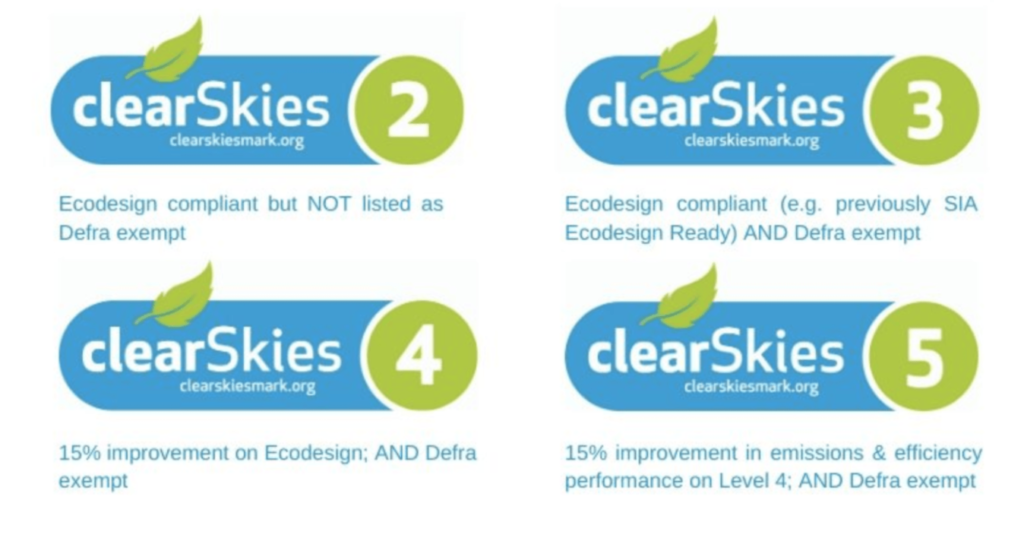On 1st January 2022 – only a few weeks away, all wood-burning and multifuel stoves sold in the UK need to be Ecodesign Ready, meaning each stove needs to meet the strict Ecodesign standard by law. The Ecodesign Ready mark is given to stoves, which meet the five key requirements of the Regulation (EU) 2015/1185/ 24/5/2015.

Why Use an Ecodesign Stove?
An open fire has an efficiency of around 20%, this means up to 80% of the heat a fire produces is lost. In comparison, an Ecodesign stove has an efficiency of around 80%. A great deal less wood needs to be burnt for the same heat output, thanks to the sophisticated design of an Ecodesign stove. It’s estimated that the level of heat produced from 5 logs on an Ecodesign stove, can only be matched by an open fire if the open fire was to burn no less than 16 logs.

What makes an Ecodesign Stove?
When a stove is tested to see if it is Ecodesign Ready, it must keep within these very stringent, technical parameters, which are outlined in this article:
OGCs – Organic gaseous compounds (OGC’s) from stoves will not exceed 120 mgC/m3 at 13% oxygen for stoves using solid fuel other than compressed wood pellets, and 60 mgC m3 at 13% oxygen for stoves using compressed wood pellets. The measurement of mgC/m3 means milligrams per cubic meter.
CO – Carbon Monoxide is a deadly, colourless, odourless gas that is produced during combustion. When a stove is being checked for compliance with Ecodesign it is not allowed to exceed 1,500 mg/m3 at 13% oxygen using solid fuel other than compressed wood pellets, and 300 mg/m3 at 13% oxygen for stoves using compressed wood pellets.
NOx – Nitrogen Oxides are a combination of gases, which are composed of nitrogen and oxygen. NOx gases react to form smog and acid rain as well as being central to the formation of fine particles (PM) and ground-level ozone, both of which are associated with adverse health effects. NOx from solid fuel stoves using fossil fuels shall not exceed 300 mg/m3 expressed as NO2 at 13% oxygen.
PM – PM stands for Particulate Matter and Particulate matter (PM), also known as particle pollution, is a complex mixture of extremely small particles and liquid droplets that get into the air. Once inhaled, these particles can affect the heart and lungs and cause serious health effects.
Particle pollution includes:
PM10 : inhalable particles, with diameters that are generally 10 micrometres and smaller; and
PM2.5 : fine inhalable particles, with diameters that are generally 2.5 micrometres and smaller
PM emissions from stoves shall not exceed 50 mg/m3 at 13% oxygen. PM emissions from stoves using solid fuel other than compressed wood pellets and cookers shall not exceed 40 mg/m3 at 13% oxygen.
The Charlton & Jenrick Range:
It was well over 3 years ago, back in April 2018 when all Charlton & Jenrick stoves became Ecodesign Ready. This was a huge achievement, and put us ahead of a lot of other stove manufacturers. Since then we have further continued to develop our stoves. Apart from being Ecodesign Ready all Charlton & Jenrick stoves are also clearSkies certified:

Most of the stoves in the Charlton & Jenrick range are level 5 (see above), which further demonstrates our strong commitment to going above and beyond when it comes to making our stoves environmentally friendly. Be aware that a modern Ecodesign Ready stove is part of the solution surrounding global warming. They are both clean and are a sustainable heating source.
Despite the misinformation in the media, which manifests itself from time to time, make no mistake, purchasing an Ecodesign stove is an environmentally sound decision.







